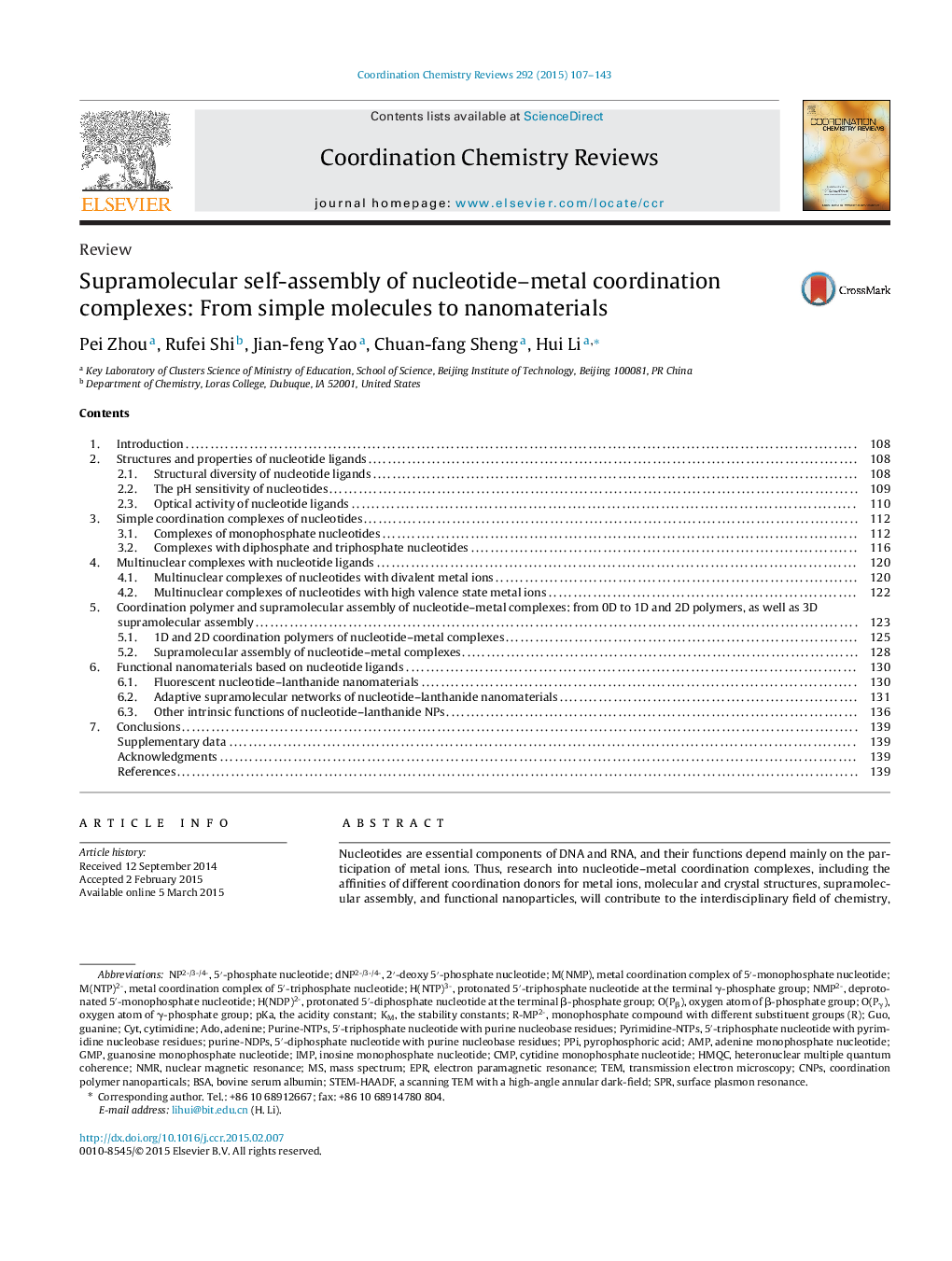| کد مقاله | کد نشریه | سال انتشار | مقاله انگلیسی | نسخه تمام متن |
|---|---|---|---|---|
| 1300938 | 1498727 | 2015 | 37 صفحه PDF | دانلود رایگان |
• Structural diversity, pH sensitivity, and chirality of nucleotide ligands.
• Nucleotide–metal complexes analyzed based on X-ray single crystal structures.
• Rules of supramolecular self-assembly of nucleotide–metal coordination complexes.
• Chirality and chirality delivery in nucleotide complex systems.
• Functional nanomaterials with nucleotide complex as building blocks are summarized, including fluorescence, adaptive inclusion properties, molecular recognition, chiral resolution and so on.
Nucleotides are essential components of DNA and RNA, and their functions depend mainly on the participation of metal ions. Thus, research into nucleotide–metal coordination complexes, including the affinities of different coordination donors for metal ions, molecular and crystal structures, supramolecular assembly, and functional nanoparticles, will contribute to the interdisciplinary field of chemistry, biology, and materials. Numerous achievements have been reported in this area but few comprehensive reviews have considered nucleotide–metal complexes from the viewpoints of crystallography and supramolecular chemistry, or aspects of their chirality and chirality delivery. In this review, we describe the coordination ability of nucleotide ligands, the structures and properties of nucleotide–metal coordination complexes, and supramolecular assemblies. We review mononuclear complexes, multinuclear complexes, 1D and 2D coordination polymers, and 3D supramolecular assemblies in terms of their structures, mainly based on their X-ray single crystal diffraction data. In particular, we highlight the chirality of nucleotide–metal complex, including their molecular chirality, supramolecular helical chirality, and extended axial chirality. Furthermore, we summarize the functional properties of nucleotide–metal nanomaterials, such as their luminescence, magnetism, and adaptive inclusion properties. We discuss the future challenges and opportunities of research into nucleotide–metal complex.
Figure optionsDownload high-quality image (209 K)Download as PowerPoint slide
Journal: Coordination Chemistry Reviews - Volume 292, 15 May 2015, Pages 107–143
